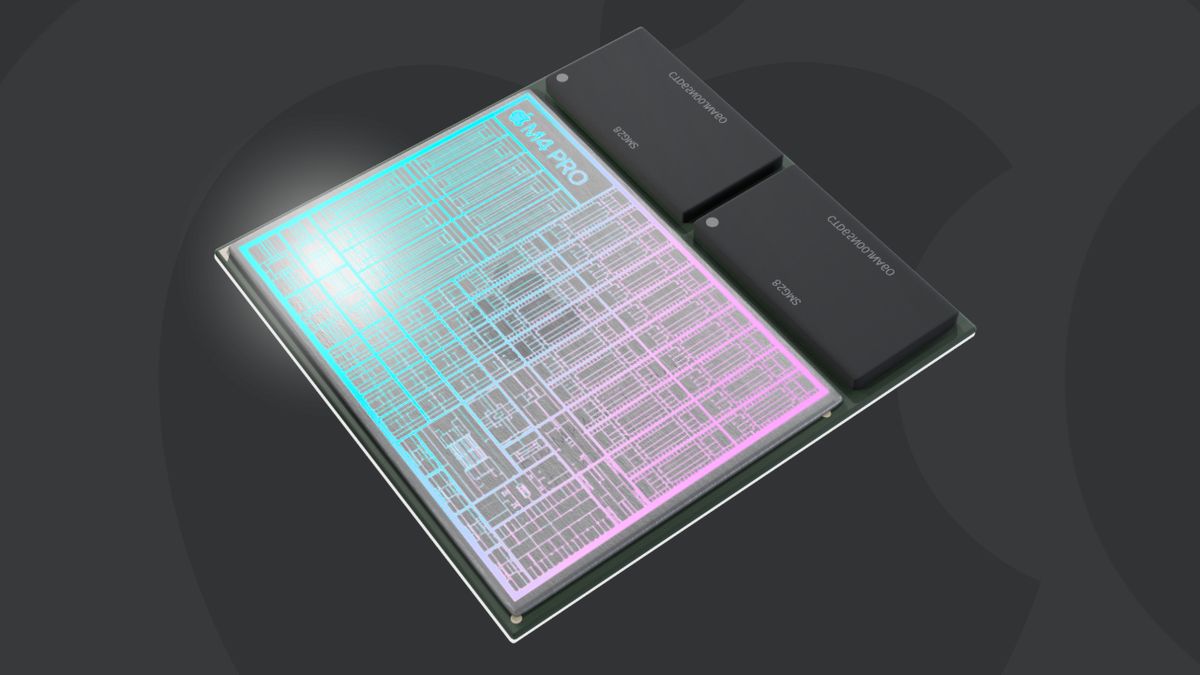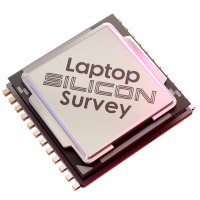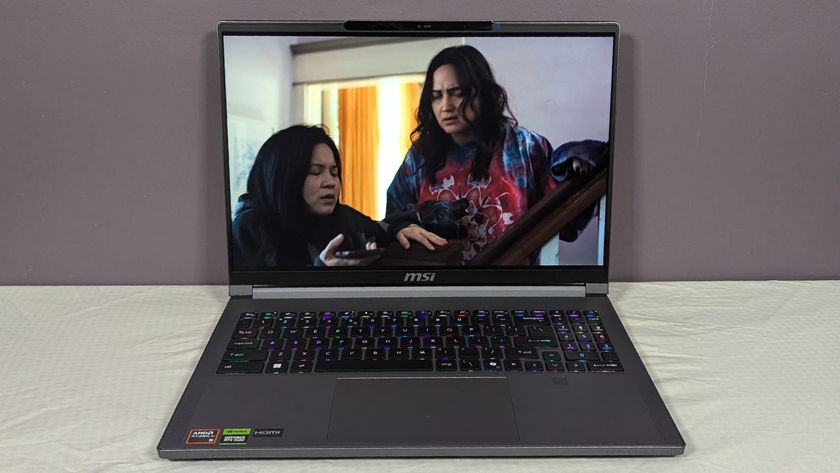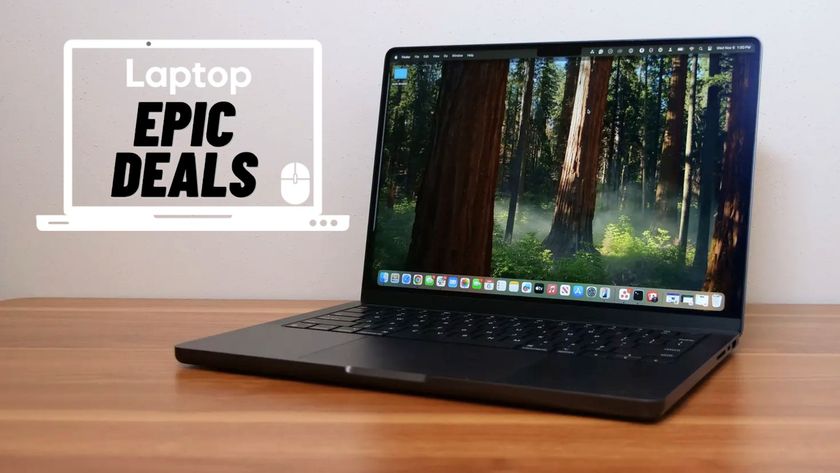MacBook "without any compromises": Apple's Doug Brooks says performance and battery life dominance will continue as M5 rumors emerge
The Apple veteran exclusively tells Laptop Mag about the future of Apple Silicon — and how Apple arrived at this moment.

One of Apple’s biggest selling points is its quality control.
Because of Apple’s end-to-end authority over its iPhones, iPads, and MacBooks — from the silicon level up to the finished product — the build quality has been difficult to match.
Apple builds were still great in the days of Intel-powered MacBooks from 2006 to 2020, but all laptop buyers — Mac or otherwise — still had to compromise, Apple’s Doug Brooks tells Laptop Mag.
“Prior to [the debut of the M-series chip], PC customers were used to having to choose either faster performance with poor battery life or a slow PC with better battery life,” Brooks said in a recent interview. “The Mac transition to Apple silicon changed all of that.”
Now that Apple’s M-series chips are here, “users can expect performance, power efficiency, and a rich set of features without any compromises.”
Brooks, who started working at Apple as a Systems Engineer in 1994 and is now Product Manager for Mac Hardware, is enthusiastic about the future, particularly in two areas: Apple’s ability to maintain its dominance in the performance and battery life arenas.
A few days after Laptop Mag interviewed Brooks for our Silicon Survey series, Korea's Electronic Times reported that Apple's M5 silicon chips may soon go into mass production, citing insider sources who told the technology newspaper that orders are now being placed for equipment to expand M5 chip production. (Laptop Mag did not speak with Brooks about a rumored M5 chip specifically.)
This article is part of a Laptop Mag special issue featuring exclusive interviews interviews with Apple, AMD, Intel, Qualcomm, Nvidia, and more as we learn how their silicon will shape the future of CPUs and GPUs, check out Laptop Mag's Silicon Survey 2025 special issue for more.
The Apple Silicon standard
Apple’s journey to custom silicon started earlier than M-series CPUs. The first custom Apple chipsets were the A-series used on iPhones and iPads, launched over a decade ago.
“From the very beginning, we built our chips to be extremely power efficient. Our silicon journey started with designing chips for iPhone and iPad — small enclosures without vents or fans,” Brooks explains. Apple’s journey to custom silicon started with the A4 chip in the first generation Apple iPad and iPhone 4 in 2010.
From the very beginning, we built our chips to be extremely power efficient.
Doug Brooks, Product Manager for Mac Hardware, Apple
Apple took its cues from the phone and tablet markets to create the flagship M-series laptop and desktop chips we know today. “This discipline resulted in a scalable architecture that prioritized performance per watt, and this benefits every chip we make. It’s why M-series chips for Mac deliver incredible performance and amazing battery life.”
Based on what we saw with the MacBook Pro 14 (M4, 2024) and MacBook Pro 16 (M4 Pro, 2024), Apple has certainly kept up with its promise of incredible performance and amazing battery life — even if Qualcomm still holds the crown for laptop with the best battery life.
Apple Intelligence
One defining feature of Apple’s silicon takeover is its use of AI and neural processors. Apple Silicon has featured Neural Engines (the Apple version of an NPU) since the A11 Bionic in 2017. And that’s now an intentional feature of Apple’s hardware.
As Brooks explains, “We design Apple silicon from the ground up to be powerful chips for AI.”
“In 2017 we launched our first Neural Engine as part of A11 Bionic, the chip powering iPhone X. The Neural Engine then came to Mac with the M1 chip in 2020, and they continue to get more capable. Beyond the Neural Engine, all M-series silicon are designed to excel at machine learning and AI. The silicon's ML accelerators in the CPUs, extremely powerful GPUs, and a unified memory architecture all come together, enabling Macs to efficiently tackle AI tasks.”
We design Apple silicon from the ground up to be powerful chips for AI.
Doug Brooks, Product Manager for Mac Hardware, Apple
Apple has moved beyond hardware optimization and into AI features with the launch of Apple Intelligence across the whole ecosystem.
“Apple Intelligence offers our users new ways to take actions or simplify their daily tasks while keeping personal information private.” From a better Siri to generative emojis, there are myriad uses for Apple Intelligence.
Unlike other AI suites, Apple has coded privacy into its AI from the start. “Apple Intelligence is built with the same great privacy protections whether the users' data is processed on device or using Private Cloud Compute (PCC),” Brooks elaborated.
PCC is Apple’s cloud intelligence system, which expands user privacy to the cloud, so even when your Apple device needs cloud assistance, your personal data is encrypted and secured.
“PCC is built with custom Apple silicon and a hardened operating system designed for privacy, and is one of the most advanced security architectures ever deployed for cloud AI compute at scale.”
Apple's 2025 roadmap and what’s ahead
Apple launched the M4, M4 Pro, and M4 Max-powered MacBook Pros in the fall of 2024. The company is expected to follow up with the M4-powered MacBook Air 13 and 15 this Spring.
On the mobile front, Apple also overhauled the iPhone lineup with the iPhone 16, 16 Plus, 16 Pro, and 16 Pro Max models this past fall, with the iPhone 17 expected to launch later this year. Apple has a rumored iPhone SE 4 coming this Spring as well as updates to the iPad lineup.
We see an opportunity to deliver truly personal intelligence that can change how people interact with their devices.
Doug Brooks, Product Manager for Mac Hardware, Apple
There’s never been a better time to upgrade your Apple devices than now. Especially considering the proposed White House silicon tariffs, which could see laptops and gaming hardware prices spike up to 40%. Of course, the US tariff tactics are subject to change, so these figures are not set in stone.
But if you do wait, the Apple M5 could launch as soon as May 2025, though if the trend from the M4 holds into a second generation, the launch device for Apple’s next generation of silicon could be the iPad Pro, with the MacBook models following in the fall.
While many of Apple’s products will feature Apple Intelligence features, the latest Apple Silicon will have a distinct edge. As Brooks confirmed, “AI is going to make our personal computers even more powerful with them being able to do even more for you.
“We see an opportunity to deliver truly personal intelligence that can change how people interact with their devices.”

A former lab gremlin for Tom's Guide, Laptop Mag, Tom's Hardware, and Tech Radar; Madeline has escaped the labs to join Laptop Mag as a Staff Writer. With over a decade of experience writing about tech and gaming, she may actually know a thing or two. Sometimes. When she isn't writing about the latest laptops and AI software, Madeline likes to throw herself into the ocean as a PADI scuba diving instructor and underwater photography enthusiast.
You must confirm your public display name before commenting
Please logout and then login again, you will then be prompted to enter your display name.
Most Popular








